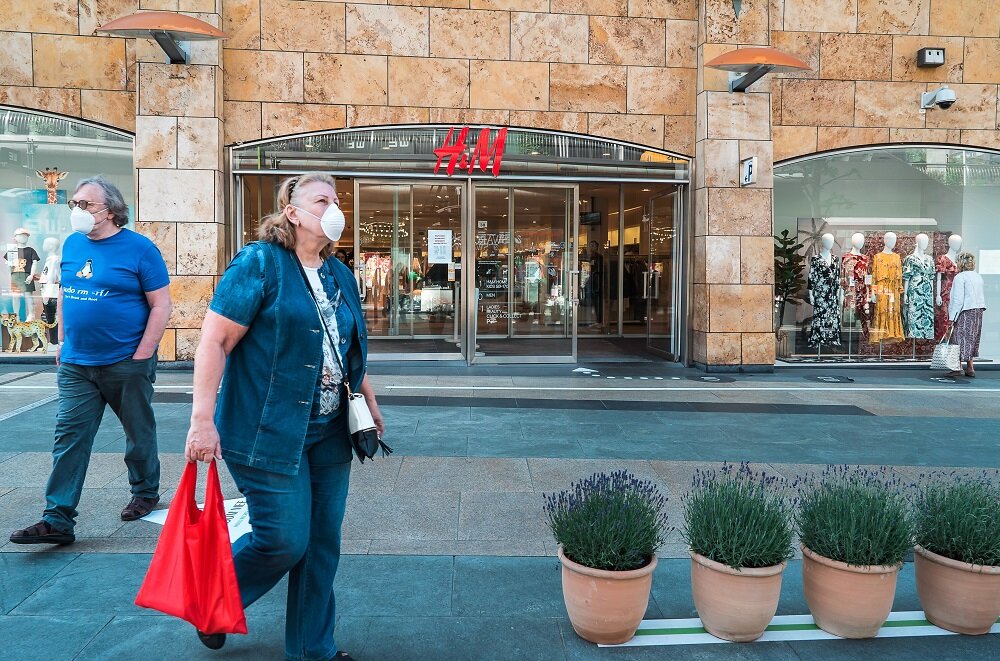Property ladder
Following widespread reports of cutbacks and redundancy plans from national retailers, lower consumer confidence and a structural shift in consumer shopping behaviour, we look at how different retail destinations are faring since lockdown measures were eased.
A slow and steady recovery
Since the reopening of shops in mid-June, footfall across retail locations has continued to rise and is currently at 68% of its level vs. last year (according to Springboard data). Last week saw the highest footfall increase to retail destinations since the week commencing 16th March 2020, with an encouraging slow and steady recovery over the past eight weeks. The government’s `Eat Out to Help Out' scheme has also likely contributed to a boost in visits to retail destinations with a varied F&B offer, following highstreets seeing a double-digit rise in footfall following the opening of restaurants, cafes and bars at the start of July.
Retail parks staying ahead
Retail parks have seen the strongest traction in regaining footfall to pre-Covid levels, with footfall currently at 85% of last year's level, compared to 60% at high streets and shopping centres. This is likely driven by the nature of retail parks allowing for social distancing measures to be easier to implement, such as outdoor space for queueing and larger store sizes, as well as the presence of supermarkets, and homeware stores, which were able to open earlier.
In an online survey by AL Marketing and Springboard on the re-opening of UK retail destinations, one third of shoppers claimed they were nervous to return to shopping destinations. Just one third of shoppers stated that they plan to visit large towns, city centres and covered shopping centres with the same frequency as they did before lockdown, with retail parks and outdoor shopping centres faring slightly better.
As well as lower consumer confidence around visiting large towns and city centres, these retail locations also heavily rely on office workers and are suffering from large volumes of people still working from home and uncertainty about returning to work.
Retailer response
Retailers are continuing to develop their in-store propositions in a variety of ways to encourage shoppers back to their shopping centre and high street stores, whilst maximising shopper and staff safety. Outdoor and adventure sports retailer Ellis Brigham offer a booking system for customer appointments and are also considering virtual queuing technology to enable customers to be notified when a consultation slot becomes available, to avoid over-crowded stores.
The Watches of Switzerland Group (including jewellery brands Goldsmiths, Mappin & Webb and Watches of Switzerland) launched its ‘By Personal Appointment’ service last month, enabling customers to book an expert consultation at their local store on-line, or on the phone or via zoom if they prefer. The jewellery group saw a large uptake of 13,000 consultations over a 2-week period, emphasising that demand is there but safety is a key priority. This service has assisted the group in driving footfall to stores in controlled measures, with c.40% of in-store traffic resulting from the consultations.
Looking ahead
The retail industry is at the start of a long road of recovery, catching up on months of store closures and heavily impacted by wider economic uncertainty, however, the gradual increase in footfall to physical shopping destinations over the past eight weeks is encouraging. In the upcoming weeks, it is essential that retailers and asset managers continue to develop their propositions and provide reassurance to consumers through raising awareness of how they have adapted in-store / shopping centre operations to ensure safety and social distancing measures, to continue to encourage more people to shop and support physical retail destinations.
Sophie Pisano

